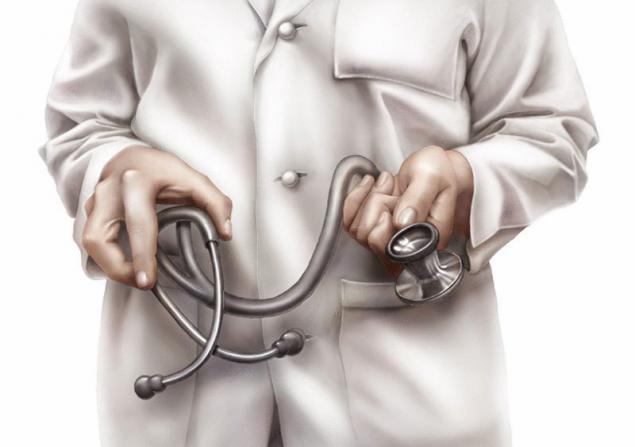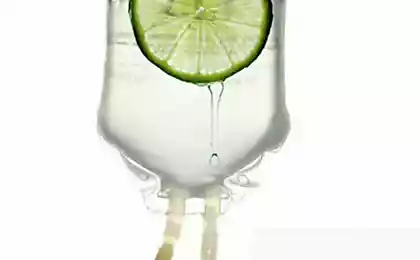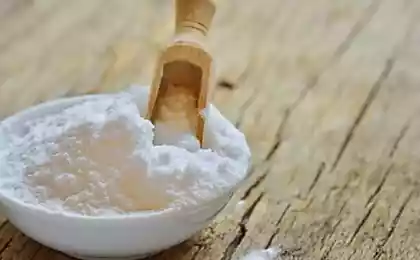609
Dr. Mendelson: examination of patients — benefit or harm?

Every woman is familiar with the concept of a loss leader is a product that is sold at a price below cost in order to lure you into the store so you bought something else.
Annual preventive examination for many decades was such a loss-leader in Modern Medicine. This method that doctors use to reach people with the good health and to announce to them that they are sick.
There is no doubt that this strategy had considerable success. If you are not able to resist the powerful pressure skilled vendors, we probably share the belief of most Americans that the annual routine inspection is required to maintain health. Modern Medicine has made every effort to sell this concept, and helped her in this by organizations such as the American society for the fight against cancer with its ubiquitous slogan, "Targeted cancer prevention".
In 1980, the American medical Association and the American society for the fight against cancer still found something for which I was severely criticized for many years: annual examination of patients without any symptoms might cause more harm than good.
But do not think that at least one of these organizations is widely publicly acknowledged such a radical change in doctrine. However, in 1980 the American medical Association finally ceased support for annual checkups, and the American society for the fight against cancer abolished universal annual mammograms, PAP tests and chest x-ray. It took too much time, but they prichlos to give up because of compelling evidence that these treatments are really dangerous, not just useless.
As a result, many studies of the last ten or so years it was found that an annual maintenance inspection is a waste of time and money. One of the most extensive was conducted from 1964 to 1973 in the framework of Kaiser's Wellness program in California. For participation in the program was selected people ranging in age from thirty-five to fifty-four years of commensurate socio-economic groups. Half of them were persuaded to go for regular medical check-up, and the other half not. After seven years of observation it was found that the overall level of health of both groups was the same — both from the point of view of mortality, and from the point of view of morbidity — regardless of the periodic passage or failure to perform medical examinations.
My concern is not so much of these inspections, how many related surveys, and not only because they are largely useless. I'm concerned that they too often lead to physical harm and even death.
A classic example is a PAP smear. Despite the fact that this analysis is for the presence of cervical cancer never adequately has not been studied for its effectiveness, Modern Medicine vigorously took him for a spin. According to a survey in 1973 found that more than half of all Americans over the age of seventeen passed the analysis in the preceding year.
Gynecologists are happy to have received a PAP smear in their practice, because it gave them access to patients at least once a year. Although numerous studies have put its value into question, doctors have no desire to abandon the annual analysis, as it provided a great opportunity for intervention. If they ask why we need this test, they are proof of the value of the PAP smear have been shown to reduce mortality from cervical cancer.
Justifying universal annual the purpose of this test, they ignored the information ten years ago which questioned its necessity. Dr. S. L. sharp and Dr. Harry ORF said in his report:
"Several studies have demonstrated the reduction of mortality from cervical cancer, but as it became apparent before Cytology (PAP tests) is widespread, to date there is no conclusive evidence that this diagnostic method has played a significant role in reducing mortality".
Recently, two female scientists, Dr. Anne-Marie Foltz from new York University, and Jennifer L. Kelsey, MD, an epidemiologist with the medical faculty Jenskogo University, also said that there is no significant evidence that annual screening millions of women have reduced the mortality from cervical cancer. They paid special attention to the notorious inaccuracy of this analysis and the fact that he never passed a controlled test to determine its effectiveness.
I not so much worried about the effectiveness of the PAP smear in preventing death from cancer as he himself and that the number of deaths and amount of damage that he caused. A few years ago, I was approached for advice my friend, himself a famous physician. His wife has recently passed a PAP smear, and she suspected cancer. It is strongly advised to do a cone biopsy of the cervix. It is this kind of biopsy, which is universally done if a PAP smear is questionable. So my friend asked for my opinion on whether his wife to agree to this procedure.
I said I don't see any sense in this.
They had been married for thirty-five years. She had never taken hormonal contraceptives or estrogen, is usually prescribed after the menopause; there are also other reasons why she could be at risk for cancer. Therefore, to continue the examination was inappropriate.
No wonder a friend of mine who, like most doctors, believes in the myths created by Modern Medicine, advised his wife to undergo a biopsy. As I expected, cancer was not confirmed, but as a result of the procedure, the woman opened up all this blood, what urgently it was necessary to remove the uterus. During the hysterectomy, she developed shock and required transfusion of several liters of blood. As a result of this transfusion at six weeks she became ill with hepatitis, which almost died.
Expensive as she had to pay for the trust to unnecessary and inaccurate conventional analysis!
Around the same time, wives of two of my friends passed the standard procedure of mammography. One of them the picture showed a tumor, and she underwent a biopsy. Biopsy also gave a positive result, and the woman removed one breast.
Postoperative pathological examination of the removed gland showed no signs of cancer. The other woman the also aroused suspicion on the tumor, but the biopsy was negative. She sighed with relief and decided not to take any surveys. But the result of the biopsy was wrong, and OAG, died from breast cancer.
I realize that these are merely examples from which it is impossible to make scientific conclusions. I cite them only to more clearly demonstrate why standard examinations of apparently healthy people may be dangerous to health. Because they lead to radical medical or surgical intervention, based on the tests that are at best questionable, and at worst extremely inaccurate. They also lead to negligence in doctor's, where the unsatisfactory quality of the examination substitute for meticulous clinical analysis and issued for medical opinion.
As in the case of a PAP smear, a standard prescribed by doctors the survey is inaccurate and is not the point in the examination of the patient, from which to start. And disadvantages these are complemented by incorrect interpretation of test results, as well as inefficient and sloppy laboratory work. A PAP smear gives logsource result in 20 percent of cases, convincing doctors and women who do have cervical cancer, that it is not. In contrast, from 5 to 10 percent false-positive results.
Partly for this reason that the country has soared, the number of operations of hysterectomy.
Even when these tests are reliable, chances are that the lab, who sent the material, it will confuse the results. Medical laboratory work is scandalously sleazy. In 1975, the Federal Center for disease control conducted an audit of laboratories throughout the country in which it was found that from 10 to 40 percent of the bacteriological tests were performed unsatisfactory in the determination of blood groups from 12 to 18% of tests were erroneous, and 20-30 percent of tests for haemoglobin and electrolytes in blood serum was inaccurate. Overall, more than a quarter of all tests were done with errors. The result of these analyses was the wrong appointment or failure to schedule appropriate treatment and lost money that result has led people to unnecessary suffering and national economies, costing $ 25 billion annually.
Another American test laboratories in accordance with high standards and licensed to participate in Medicare* identified a discrepancy of 50 percent of them stated standards.
*Medicare operating since 1965 in the USA the Federal program of preferential health insurance for persons over 65, certain categories of persons with disabilities and patients with severe renal impairment. — Approx. lane
A large-scale campaign for re-holding of 25 000 analyses made by 225 labs in new Jersey, found that only 20 percent of them worked at an acceptable level, more than 90 percent of the time. Only half of them passed the test for 75 percent of the time. In laboratories, tested by Center for disease control, pathology was found in 10-12% of samples of healthy tissue, which led to the appointment of risky medical procedures, while the people were healthy!
Many expensive tests prescribed in the standard course of preventive inspection, have little value, if at all, have at least some — even if the lab doing them correctly. In 1975 a study was conducted on 20 different blood tests that are commonly assigned to patients during hospitalization. From 1 000 examined cases, only one patient really benefited from these tests.
Canadian working group on regular checkups, speaking against annual checkups, concluded that the standard appointed electrocardiogram, biochemical blood test and even urine tests are not appropriate. The danger of all standard surveys, of course, is that, although they may benefit some patients but will harm many others as their results often are the result of carelessness.
Even the standard measurements made during a standard physical examination, such as, for example, measure weight and temperature, can harm patients more than help. If you have fever, your doctor will prescribe aspirin to bring it down. It is disrespect for the fundamental physiological principle that I studied biology in the second year of the University and to which the doctors apparently didn't make it to medical school. It is that temperature increases phagocytic activity of white blood cells so they can absorb the bacteria that caused your illness. There is no sense to interrupt this process, reducing body temperature, if it has not come close to the risk zone. I rarely prescribe aspirin to reduce fever, except in extreme situations, and they must be really extreme.
Makes no sense to get upset about this symptom, which just shows that the organism is hard fighting the disease. High temperature even artificially supported in the treatment of cancer and certain other diseases.
However, when the mother calls the doctor about illness of her child, the first thing asked most of the doctors have measured it the temperature. The doctor learns nothing useful from her answer, because many innocuous diseases, for example, roseola — give a very high temperature, but are not a cause for concern. Other life — threatening diseases, such as tuberculous meningitis, often not accompanied by fever.
Despite the fact that the temperature of your child is of little value from the medical point of view, in one it can be helpful to you. If you are unable to agree on acceptance, remember: doctors are programmed to belief that thermometer readings are important, although they don't know why. If you want to be sure that the doctor will prescribe you a visit right now, and he asks about the temperature, tell the child 41°. If you find yourself at the reception without fever, it can cause some issues, but a few drops of white lies will calm the doctor, and he will begin his duties — find out what your child sick.
One of the most common reasons for visits to the pediatrician — the pain in the throat. Perhaps Modern Medicine has already taught you that a sore throat can be a symptom of a streptococcal infection and, in turn, rheumatism, to which, presumably, causes this infection.
I believe that try to impose ideas about the Streptococcus is not more than fiction, but it leads to what I call the hundred dollar disease. I thought so a few years ago, but now it may be, was already a two hundred disease.
Why fiction?
Give two explanations. First: there is no reliable scientific evidence that the strep leads to rheumatic fever — a disease, occurring rarely and only in the poor strata of the population. Second, most mothers do not know about this, but doctors should know that during the winter period, 20 percent of children one or more times in the throat to settle strep germs and do not give any symptoms. And that doesn't even mean that these children are sick.
A qualified doctor can clinical picture to judge the actual patient has a streptococcal infection. Talking about it three "warning" signs: high fever, pus on the back of the throat and swollen glands.
But that usually happens when you bring your child to the pediatrician for a sore throat? The doctor immediately makes mountains out of molehills and assigns the sowing of the throat, despite the absence of clinical signs of strep. In every fifth case in the analysis is sowed strep Bacillus, and the doctor jumps to the illogical conclusion that the positive analysis shows that Streptococcus was the cause of the sore throat.
In the mind of the physician the presence of the Streptococcus indicates the need to prescribe penicillin, which the child needs to honestly accept within ten days, otherwise the antibiotic will be useless. Your doctor may also give you a urine test to make sure that your child does not have nephritis, and, of course, will prescribe re-appointment in ten days to get another sowing in order to determine whether he acted penicillin.
If you belong to the four-fifths of all mothers whose children were assigned to penicillin, or if you appointed him, what are the chances that the drug will not be taken in good faith during all ten days. In this case, even if it will help to avoid early complications such as sinus infection, it will not prevent the possibility of more serious late complications (rheumatic fever, nephritis). But the sore throat will pass anyway and you'll lose the money spent on penicillin, two crop, two visits to the doctor, but with gratitude to the doctor who "cured" the non-existent disease.
This incorrect application of the tests enters into the expenses, but relatively harmless for health. However, there are many situations where standard substitution for clinical judgment and conclusions of the analyses represents a real danger for the patient waiting for assistance from a doctor. This problem could not be if the survey were scientifically valid and accurately interpreted, but often this is not so. When a doctor neglects clinical evaluation and too reliant on data analyses, you run the risk of their possible inaccuracies. On the one hand, you have a disease that remains untreated. And on the other you may be a victim of treatment or surgery which is not needed.
When tests become common practice, doctors succumb to the desire to stop thinking, because they get them dependent.
The next step for the doctor is to cease to view the results of the tests, as if his job ended at the moment when he issued the direction.
It seems incredible?
In this case, how do you explain the results of the experiment, during which laboratory gave doctors hundreds of positive serological test results for syphilis? Only three or four cases, the doctors sent the patients for re-tests!
Obviously, the rest didn't even look at the results or were going to do it, just to fulfill their duty to patients and to report to the health authorities.
From my own experience I know that between the clinical skill of the physician and the extent to which it relies on the analyses, there was an almost inverse relationship. Today, many doctors are very superficial talk with the patient, the more fluently it inspected, and then be given a packet of directions for tests.
And it is a tragedy, because it ignored the most reliable diagnostic methods.
My experience and the experience of respected physicians shows that 75 percent of diagnoses can be made only after a conversation with the patient, 15% after inspection, and another 5 after laboratory tests. The remaining patients have diseases that are not diagnosed by any of these methods.
Judging from the above ratio, physicians should deeply believe in the traditional methods of diagnosis. Why is it wrong? I think the reasons are fairly obvious, although not able to read the minds of his colleagues. The collection is truly a complete medical history and thorough physical examination is the most time and bring less money in comparison with other diagnostic procedures, which are at the disposal of the doctor.
Doctors wishing to inflate their income, can save time and increase profits by installing in your offices a lot of fantastic diagnostic devices and nizkooplachivaemyh hiring of female staff to undertake countless tests and procedures. For example, many enterprises of group practice**have now at their disposal electroencephalographs (EEG).
** Group practice — Association of several medical specialists. Income from medical practice of its members is summed and distributed in accordance with the rules established in this group. — Approx. lane
Despite the fact that studies showed the inability of the EEG nor to diagnose or exclude epilepsy, and how to detect minimal brain damage, doctors have at their disposal the equipment, do not allow him to stand, continuing to assign EEG. In 1977, two a pediatric neurologist from the Institute for Johns Hopkins said that the EEG "is currently used too often and incorrectly," and added: "the Profitability of this research led to the rapid spread of the EEG in the offices of neurologists and the subsequent increase in the number of directions on the surveys conducted, desertifica-highly specialised professionals."
No wonder doctors practicing Modern Medicine, in 1975, issued 8 billion areas on the survey which has brought them 15 billion dollars in revenue! published
©Robert S. Mendelsohn from the book Men's medicine. Mutilated women.
Source: /users/1077






















